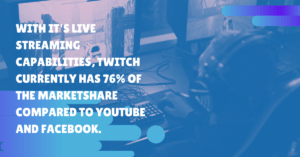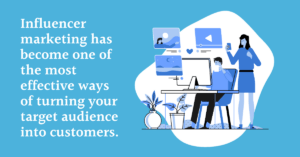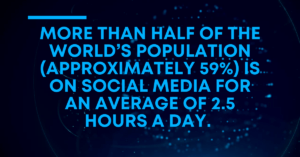What Is the Creator Economy?
In today’s society, there is a new booming market for a line of goods unlike anything the world has ever seen before: it is a market composed of over 50 million constantly growing streamers, social network influencers, content creators, bloggers, and the monetization revolving around them.
An article published by Vogue Business calls this an “economy gold rush” as various investors, creators, and marketers attempt to circumnavigate this new industry.
While the world once saw this economy as a niche community of internet users, it has become one of the fastest-growing markets utilized by individuals, small businesses, and corporations alike.
Creators
The fundamental building blocks of the creator economy are, well, the creators. Types of creators may include (but are not limited to): YouTubers, Tiktokers, Instagram/Twitter influencers, online writers such as bloggers, photographers, podcasters, and streamers.
It is important to note that three common traits are found in most creators. First, they are self-starting sole proprietors. Yes, pre-existing corporations and businesses create social network accounts to promote their brand, but most creators are unaffiliated, self-starting individuals.
Second, they can manipulate specific markets with their massive followings. Take the explosion of cryptocurrency, for example. While the rapid increase of crypto prices in recent years cannot be attributed to a single individual, many influencers have caused the prices of various cryptos to inflate regularly, causing significant volatility and turmoil in the market.
Third, they usually monetize their content for their profit and associated brands. There are various ways creators do this, which we will discuss later.
Why Retail Brands Should Invest in Creator Marketing
Studies indicate that the priority of social media for online retailers is 34.3%. Being such a profound part of online marketing makes creator promotion an incredibly viable strategy.
Here is a list of points regarding why brands should invest in creator marketing:
- Its reach is wide
- Creators drive trends (and revenue)
- The metaverse is expanding creator’s options
- Creators know their audience really well
Its Reach is Really Wide
The greatest thing about creator marketing? The market is entirely versatile.
Many content creators branch off into subcategories that branch off even further. For example, there is the category of youtube stars known as YouTubers. There are many kinds of YouTubers such as chefs, gamers, vloggers, reviewers, and many more. This variety allows individuals to watch content tailored towards their interests. It also makes the economic market all-encompassing as it doesn’t strive to please a single demographic.
Creators Drive Trends (and Revenue)
Content creators often interact with their followers and create content based on feedback and comments. In turn, a more intrapersonal connection is made between the creator and their target audience. People watching a video or listening to a podcast by their favorite influencer are more receptive to suggestions made by the creator. This influence is a powerful tool that can drive trends into certain directions and earn money.
The Metaverse is Expanding Creator’s Options
Being such a new and rapidly growing industry allows much room for innovation. The creator market is not stagnant; new ideas, software, tools, and platforms are constantly being introduced into the metaverse. As a result, there are always new opportunities for making content and generating money.
Creators Know Their Audience Really Well
As previously stated, creators tailor their content and image based on the feedback of their target audience. This means that the creators know their audience almost on a personal level and are more apt at creating content desirable to their followers as well as marketing products in an unobtrusive, suggestive way. Their knowledge about their followers also allows them to market products that they think their audience would be most interested in.
Trends for the Creator Economy in 2022
There has been an exponential amount of growth in recent years for the creator economy. This economy has remained unhindered by the covid-19 pandemic and shows no sign of stopping any time soon. There have been many developments that will likely shape this economy in the upcoming year.
An Inc article suggests that brand deals in sports will go beyond being marketed solely by the top professional athletes in popular sports such as basketball and baseball and extend to athletic influencers on all levels across all sports. Not only will this increase the amount of money generated on all fronts, but it will also spread the commercial reach of brands much further than before.
Furthermore, ever since the beginning of the pandemic, the world has undoubtedly been heading towards a more remote, cyber-based society. Pertaining to such, a 2022 Kepios analysis indicates that 58.4 percent of the worldwide population uses social media.
This heavily implies that a large part of communication done in modern-day society is done through social networks. As new technologies make it easier and more convenient to communicate through these means, there will be an astonishing growth in the market around them, mainly the creator market.
Through the years 2022 and past, the creator economy will likely follow its previous patterns of constant growth and success as there is limitless potential in what can be done with it. This is backed by the fact that big name and small businesses alike are beginning to use this industry as a means of promotion and seems to be where marketing as a whole is heading.
Platforms Retail Creators Use
There is a wide variety of social platforms retail creators use to express their content and promote their brands. Here are just some of the biggest ones creators are using:
Youtube
Youtube is a video-based, Google-owned content sharing platform where users can watch various types of videos as well as upload their own. It runs off an ad-based system where ads are embedded within videos and pays creators based on traffic generated.
Instagram is a picture-based social media platform where users can share pictures, upload short videos, and message others. Many models and artists use this network as a means of advertising themselves. It’s new “Checkout” feature encourages a point-and-click style of e-commerce.
Snapchat
Snapchat is a social media app where users can post short videos and pictures to their “story,” which will disappear after 24 hours. It can also be used to send pictures, videos, and messages to individuals, which will also disappear after being opened.
Twitch
Twitch is a platform where users can stream content in real-time. It is largely a platform for video game-based streamers, but there are many other types of streamers as well. Creators here mainly generate revenue through fan donations and subscriptions.
Tiktok
Tiktok is a content-sharing platform where creators can upload short videos. These videos are usually 1 minute or less and portray some sort of dance, skit, tutorial, or other quip and are often paired with a portion of a popular song.
Substack
Substack is a publishing platform for writers that allows them to send digital newsletters to subscribers via email. They also offer services relating to analytics, design, and payment.
Patreon
Patreon is a creator platform where artists can provide consistent, exclusive content to users for a monthly subscription fee. This platform has a system that allows creators to reward subscribers with ranks, perks, and giveaways.
Onlyfans
Onlyfans is a subscription-based media sharing platform that allows creators to share content with their “fans” in exchange for a monthly subscription fee. While it allows all types of content, it is mainly used as a platform to post explicit content.
Creators Monetizing Their Reach
There is money to be made where there is time and effort put in. Creators have found numerous ways to monetize their content across all internet mediums.
Sometimes, platforms such as youtube and TikTok offer a portion of the revenue generated by ads, while other times, creators turn to brand deals to sponsor them. Audiences are more receptive to the suggestions of influencers because they are generally received as regular, relatable people.
Retail brands have taken notice of this and have begun to implement themselves into creators’ content through these sponsorships. A prime example of an online retailer using influencer marketing is the company FabFitFun.
The issue with this is that sponsorships can be an unreliable way to earn money – for both the brand and the influencer.
First of all, brands must cooperate with an influencer that expresses relevant content to their products/services and has a personality that fits the tone of their brand. Without this, there is little merit in a content creator being sponsored, as the audience will most likely ignore the ad.
Creators are also at risk because there might not always be someone willing to sponsor them. They are also at risk of being criticized by their target audience for being a “sell-out.”
Creators Are Starting Their Own Businesses
Due to the inconsistency of monetizing content through sponsors and platform-paid income, many content creators became sole proprietors of sorts.
Many began pumping out merchandise such as T-shirts and mugs with personalized logos and advertising their personal brand instead of a foreign one. The wide reach of influencers gave much more generous leeway as they already had a following, so they could even take on profitable ventures such as writing e-books and producing songs with little risk of flopping.
By becoming the main point of monetary gain, many creators were able to transition into quitting their day jobs and working full-time on their media-based businesses.
The sudden shift in entrepreneurship has led to the creator economy that we know today. The idea of promoting oneself has proven to be an extremely effective means of generating revenue as a creator can spread their influential reaches even further through merchandising while still being able to take on sponsorships from external sources.
There are so many self-starting creators and social network platforms to work with that the creator economy is growing faster than ever before. With the means of profiting off of influencer-based businesses, it shows no sign of slowing down any time soon.
Think Beyond Traditional Influencers for Your Brand
Retail brands are starting to take advantage of the incredible growth of the creator market by branching out to influencers. Many current-day influencers and creators have marketing experience from promoting themselves, making them ideal contenders to sponsor retail brands productively.
There is also the fact that the creator industry covers all types of material, which makes it possible for any retailer to find a suitable affiliate to advocate their brand.
Of course, finding the correct influencer isn’t always easy.
In order to have your brand organically and effectively represented by an influencer, you must consider many factors.
Demographics, gender, race, age, and income are all important elements imperative to finding an influencer who has synergy with the brand you’re trying to market. Simply going for the most popular creator on the most popular platform isn’t always the most effective. It’s no secret that smaller, hardcore followings are likely to spend more money and are more likely to buy products suggested by their respective influencer.
Going after a niche following that relates to your brand could turn out to be much more efficient than appealing to the casual mass following of a top influencer. Of course, every case is different as each brand is unique and requires specificity to appeal to the right audience.
Find Influencers and Creators to Promote Your Retail Brand
It’s tough finding the right influencers and creators to promote your retail brand, which is why we can help. We understand the necessity of the connection between the sponsor and the creator, which is why we want you to have a direct relationship with the person representing your brand.
We offer a variety of functions and tools to sift through a multitude of different factors to find the most suitable candidate to market your business.
Let Sideqik help you find the right person to promote your retail brand.
Joshua Smith
Latest posts by Joshua Smith (see all)
- Top LGTBQ+ Influencers to Watch in Pride Month 2022 - June 17, 2022
- How Your Brand Can Find TikTok Influencers To Reach New Audiences - June 14, 2022
- Youtubers That Are Making an Impact on Brands - June 1, 2022







